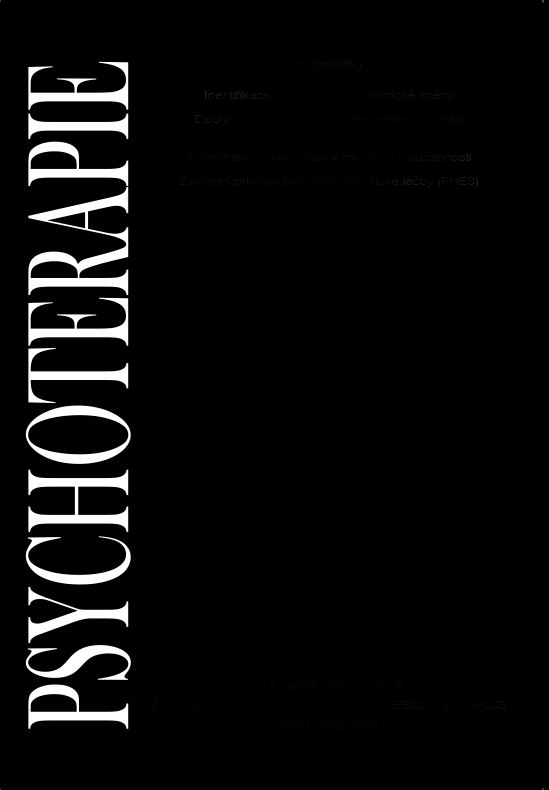Vztahová vazba klienta v psychoterapeutickém procesu
Client Attachment in Psychotherapeutic Process
Author(s): Petra Vondráčková, Tereza Mazáková, Alexandra Roubalová, Jaroslav VacekSubject(s): Social psychology and group interaction, Developmental Psychology, Behaviorism, Psychoanalysis
Published by: Masarykova univerzita nakladatelství
Keywords: psychotherapy process; attachment; client behavior;
Summary/Abstract: Background: The type of attachment is determined by the quality of care that is provided to the child by the primary caregiver in the early childhood, by his or her genetic predisposition and other experience with relationships with close people. People tend to repeat the pattern of relationship based on their early experience later in their adult lives. Psychotherapeutic situation resembles the situation of fundamental relationship between the caregiver and the child. The therapeutic relationship can work for clients like the attachment bond. Objectives: The aim of the exploratory research was to analyze the behaviour of clients in psychotherapy sessions with relation to their attachment types. Design: quantitative – qualitative analysis of clients’ behaviour in psychotherapy sessions. Data Sources: ECR-R questionnaire and semi-structured interview. Sample: 61 people in psychotherapeutic treatment, 46 % women and 54 % men. Results: Clients with the dismissive avoidant attachment were more often late for the sessions and on the contrary, the clients with secure attachment were most timely of all. Issues concerning their parents and siblings were most often discussed by clients with secure attachment and least by clients with fearful-avoidant attachment. Clients with anxious-preoccupied attachment less often experienced humour and positive emotions within sessions, positive emotions were most often experienced by people with fearful-avoidant attachment and least by anxious-preoccupied attachment clients. Anger was most common among clients with dismissive avoidant attachment. The most autonomous within sessions were clients with anxious-avoidant attachment, most engaged in treatment were clients with fearful-avoidant attachment. Descriptive talk occurred least frequently in sessions with clients with anxious-preoccupied attachment. Conclusion: There are some links between attachment and the client’s behaviour in psychotherapy sessions, especially in the question of behaviour and emotions experienced in the sessions.
Journal: Psychoterapie : praxe - inspirace - konfrontace
- Issue Year: 8/2014
- Issue No: 3
- Page Range: 201-215
- Page Count: 15
- Language: Czech

